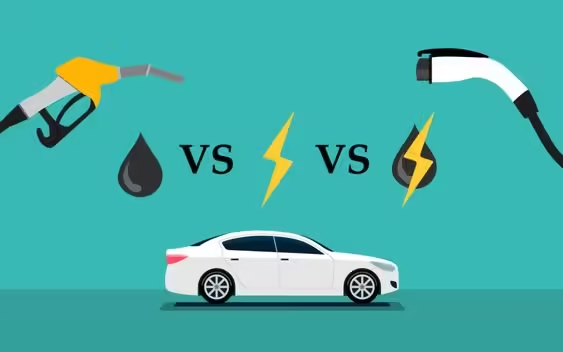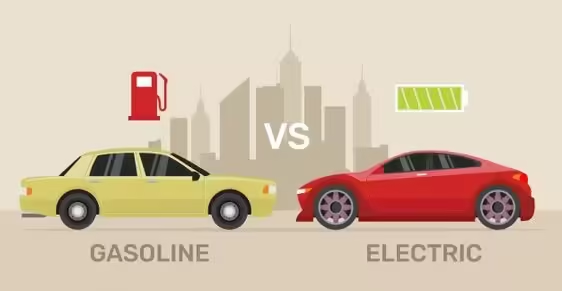
As electric vehicles (EVs) become more prevalent on roads worldwide, many potential car buyers are weighing the benefits of switching from traditional internal combustion engine (ICE) vehicles to electric alternatives. A major concern in this decision revolves around the cost, frequency, and benefits of maintenance for each type of vehicle. How do the two compare? This blog post will explore the key differences between maintaining electric cars and traditional cars, offering a detailed comparison to help you make an informed decision.

1. Simplicity of EV Components vs. ICE Complexity
At the core of maintenance considerations lies the complexity of the vehicle’s drivetrain. Traditional ICE vehicles have hundreds of moving parts. This includes the engine, transmission, exhaust systems, belts, hoses, and countless other components. These parts wear down over time, requiring regular maintenance and, in some cases, expensive repairs.
On the other hand, EVs have a far simpler design. Electric motors, the power source for EVs, have fewer moving parts. EVs also don’t have exhaust systems, oil filters, spark plugs, or transmissions, which are critical maintenance points in ICE vehicles. As a result, EVs inherently require less frequent servicing, since fewer parts can malfunction or wear down.
Key takeaway:
- EVs have fewer moving parts, resulting in fewer maintenance needs and lower risk of mechanical breakdowns.
- ICE vehicles involve more complex components, leading to more frequent maintenance and higher costs over time.
2. Cost of Regular Maintenance
The routine maintenance costs for ICE vehicles can add up significantly over time. Some of the regular services ICE owners need to account for include:
- Oil changes: Regular engine oil changes are essential to keep the car running smoothly. The frequency of these changes depends on the make and model but typically ranges from every 3,000 to 7,500 miles.
- Transmission fluid and belt replacements: Over time, transmission fluids need to be changed, and belts, such as timing belts or serpentine belts, require replacement to prevent damage.
- Exhaust system repairs: The exhaust system, including the muffler and catalytic converter, is prone to wear and corrosion, necessitating occasional repairs or replacements.
On the other hand, EVs don’t require oil changes or transmission repairs because they don’t use these systems. Some of the routine maintenance that EVs still require includes:
- Tire rotation: EVs are heavier due to their batteries, which means tire wear can happen more quickly. Regular tire rotations are essential to ensure even wear.
- Brake maintenance: While EVs use regenerative braking (which converts kinetic energy back into stored energy), they still have standard braking systems. However, brake wear is significantly reduced due to the regenerative process, so brakes last much longer in EVs compared to ICE vehicles.
Key takeaway:
- ICE vehicles incur costs for oil changes, transmission services, and exhaust repairs, which are unnecessary in EVs.
- EVs require tire rotations and brake maintenance but to a lesser degree compared to traditional cars.
3. Long-term Repairs and Replacements
As vehicles age, long-term repairs and replacements become more common. For ICE vehicles, these repairs can be costly and time-consuming. Engine and transmission replacements, suspension repairs, and emissions-related fixes are just some of the expensive issues that ICE vehicle owners may face after several years on the road.
For EVs, the primary long-term concern is the battery. EV batteries typically last between 8 to 15 years, depending on the make, model, and driving habits. While battery technology has advanced significantly, making EV batteries more durable and efficient, replacing a battery can still be expensive. Fortunately, many EV manufacturers offer warranties that cover battery replacements for a certain number of years or miles. This warranty coverage reduces the risk of costly out-of-pocket expenses for early battery failure.
Key takeaway:
- ICE vehicles may require expensive engine and transmission repairs after several years.
- EVs face potential battery replacement costs, but most manufacturers offer warranties to mitigate this risk.
4. Frequency of Servicing
Due to the nature of ICE vehicles and the number of moving parts involved, these cars require more frequent servicing. Oil changes, fluid checks, and air filter replacements are standard services that need to be done every few thousand miles. In addition, ICE cars often require more frequent brake servicing since they don’t have the regenerative braking system found in EVs.
Electric vehicles, with fewer components to maintain, typically need fewer service visits. The most common maintenance tasks for EVs include rotating tires and checking the battery and software systems. However, these tasks don’t need to be done as frequently as the routine maintenance on ICE vehicles.
In fact, some EV owners report needing only an annual service to inspect the vehicle and update the software, in contrast to ICE vehicles that often require maintenance every 5,000 to 10,000 miles.
Key takeaway:
- ICE vehicles require more frequent maintenance visits due to oil changes, brake servicing, and other fluid checks.
- EVs have fewer service requirements and can go longer between maintenance appointments.
5. Software Updates
A unique aspect of electric vehicles is their reliance on software to manage the car’s functions, from battery performance to driving modes. Many EV manufacturers, such as Tesla, offer over-the-air software updates, which can improve performance, fix bugs, and even add new features without requiring the vehicle to be taken to a dealership or mechanic. This can help EV owners avoid the costs and time associated with traditional service appointments.
In contrast, ICE vehicles don’t rely as heavily on software, and any performance upgrades or fixes usually require a trip to the mechanic or dealership. While newer ICE vehicles are beginning to integrate more software components, they still don’t benefit from the same level of software control as EVs.
Key takeaway:
- EVs can often be updated and improved remotely through software, reducing the need for in-person servicing.
- ICE vehicles typically require mechanic visits for repairs and performance improvements.
6. Environmental Impact of Maintenance
Another often-overlooked factor is the environmental impact of vehicle maintenance. Traditional ICE vehicles require oil, fluids, and exhaust system repairs, which can generate waste and contribute to pollution. For example, improper disposal of engine oil or transmission fluid can harm the environment.
Electric cars, by their nature, are more environmentally friendly, not just in terms of emissions but also in their reduced need for consumables like oil and fluids. This results in less waste over the vehicle’s lifetime, making EVs a more sustainable option for eco-conscious drivers.
Key takeaway:
- ICE vehicle maintenance can generate more waste and pollution through fluids and parts.
- EV maintenance produces less waste, contributing to a lower environmental impact.
Conclusion
When comparing electric vehicle maintenance with traditional internal combustion engine vehicle maintenance, the advantages of EVs are clear. Electric cars require fewer routine services, lower long-term repair costs, and have a reduced environmental impact. While the initial cost of purchasing an EV may be higher, the savings in maintenance and repairs over the life of the vehicle can be significant.
For drivers seeking to reduce the hassle of frequent servicing and save on long-term maintenance costs, switching to an electric vehicle presents a compelling option. However, it’s essential to consider factors like battery life and warranty coverage when making your decision. Overall, the simplicity of EV systems and the growing infrastructure supporting them make electric vehicles a strong contender for the future of transportation.

Leave a Reply